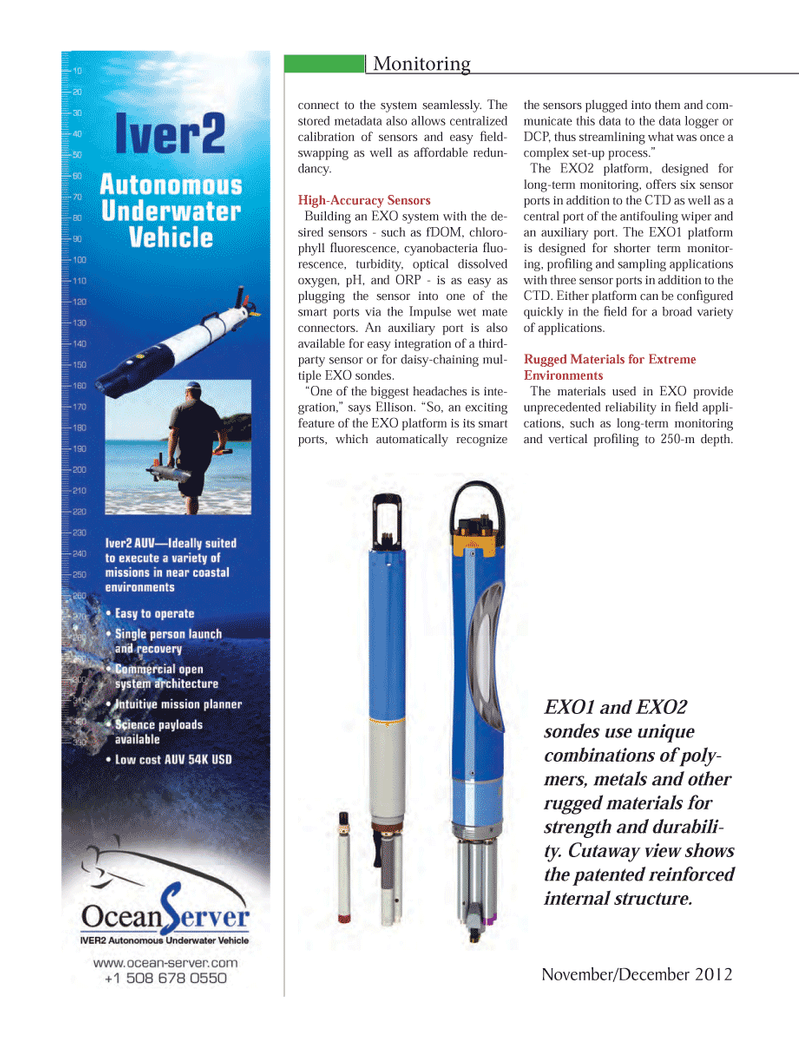
Page 26: of Marine Technology Magazine (November 2012)
Fresh Water Monitoring & Sensors
Read this page in Pdf, Flash or Html5 edition of November 2012 Marine Technology Magazine
connect to the system seamlessly. The stored metadata also allows centralized calibration of sensors and easy Þ eld-swapping as well as affordable redun- dancy. High-Accuracy SensorsBuilding an EXO system with the de-sired sensors - such as fDOM, chloro-phyll ß uorescence, cyanobacteria ß uo-rescence, turbidity, optical dissolved oxygen, pH, and ORP - is as easy as plugging the sensor into one of the smart ports via the Impulse wet mate connectors. An auxiliary port is also available for easy integration of a third- party sensor or for daisy-chaining mul-tiple EXO sondes. ÒOne of the biggest headaches is inte-gration,Ó says Ellison. ÒSo, an exciting feature of the EXO platform is its smart ports, which automatically recognize the sensors plugged into them and com-municate this data to the data logger or DCP, thus streamlining what was once a complex set-up process.Ó The EXO2 platform, designed for long-term monitoring, offers six sensor ports in addition to the CTD as well as a central port of the antifouling wiper and an auxiliary port. The EXO1 platform is designed for shorter term monitor- ing, proÞ ling and sampling applications with three sensor ports in addition to the CTD. Either platform can be conÞ gured quickly in the Þ eld for a broad variety of applications. Rugged Materials for Extreme Environments The materials used in EXO provide unprecedented reliability in Þ eld appli-cations, such as long-term monitoring and vertical proÞ ling to 250-m depth. Monitoring EXO1 and EXO2 sondes use unique combinations of poly-mers, metals and other rugged materials for strength and durabili-ty. Cutaway view shows the patented reinforced internal structure.November/December 2012MTR #9 (18-33).indd 26MTR #9 (18-33).indd 2611/29/2012 11:03:39 AM11/29/2012 11:03:39 AM

 25
25

 27
27
